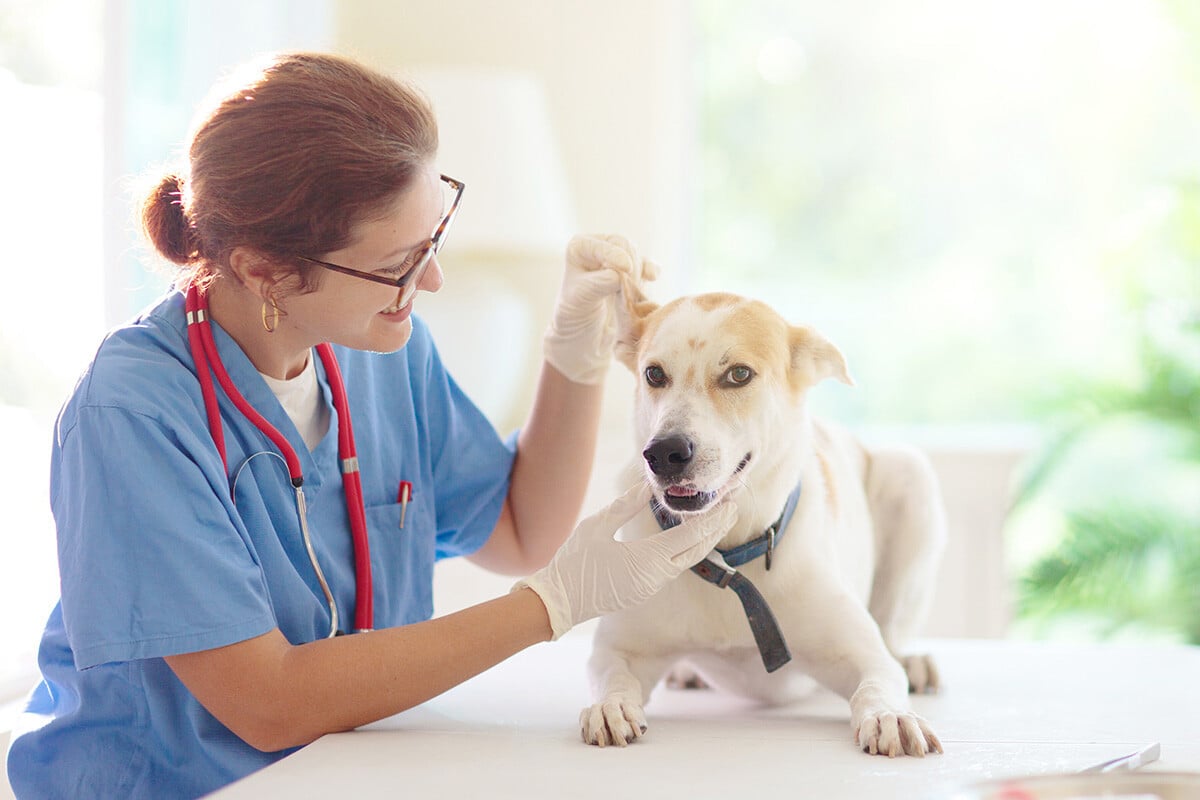
Allergy in Dogs
Just like humans, dogs can be allergic too. Allergy is a disease in which the pet’s immune system over-reacts to everyday harmless substances. Your pet can be exposed to these substances, also called allergens, by inhalation or ingestion, but most often it happens through direct contact between the skin and an allergen.
This over-reaction (or sensitivity) is caused by a hereditary dysfunction in the pet’s immune system, but it can also develop over time with repeated exposure to a particular allergen. The substances that cause allergy – the allergens – include pollens, dust-mites, moulds, dander, insects and foods.
How do I know if my pet could be allergic?
Allergy is very common in animals – 1 of 5 pets is allergic to something.
Unfortunately, many of them are not diagnosed or treated, because the symptoms can be mistaken for behavioural issues.
The most common symptoms are itching and scratching. Licking and biting paws, over-grooming, and rubbing the face against the floor or furniture are also very common. It is important to know how to identify whether your pet is allergic.
What steps can I take to verify if my pet has an allergy?
Not all itchy skin and scratching is due to an allergy. Other diseases can cause similar signs. This is why your vet will try to exclude all other possible causes first, such as fleas, scabies and infections.
If the allergy symptoms remain after excluding or treating other causes like these, the next step is to exclude food allergy. If food is not the problem, then environmental allergens can be tested for, by a quick and simple blood test, the PAX – Pet Allergy Xplorer – blood Test.
This is important, because without knowing which allergens are causing the problem, it is impossible to avoid them or to treat your pet.
Common types of allergy in dogs
The most frequent allergies in dogs are atopy (also known as atopic dermatitis, an environmental allergy), and food and flea allergies. Atopy is the most significant type, affecting around 15% of all dogs. The first symptoms generally occur before the age of 3 years, but it can occur in older dogs too.
Any dog can develop atopy, but certain breeds are at greater risk. These include the Lhasa Apso, Schnauzer, Boxer, Labrador, Golden Retriever, Poodle, West Highland White Terrier, Cairn Terrier, Jack Russell, Fox Terrier, Cocker Spaniel, Dalmatian, Bulldog, English Setter, Irish Setter and Chihuahua.
Food allergy
The most common allergens responsible for food allergy in dogs are for example the proteins in beef, chicken, wheat and milk. The food may have been part of their diet for a long time.
The only way to know whether your pet is allergic to a particular food is by doing a food elimination test. This involves giving your pet a new diet for 6–8 weeks to see if the symptoms improve, then giving the old diet again to see if the symptoms come back.
Most of the time it is difficult for the vet to know which elimination diet to give, but the PAX Food Test is designed to indicate which food ingredients may be right for your pet.
Treatment
The best way to treat an allergy is to avoid any contact between the pet and the allergens that are causing the problem. However, this is practically impossible, especially when it comes to environmental allergens.
The only treatment that can strengthen your pet’s immune system, so it no longer reacts to the allergens, is immunotherapy (also called allergen-specific immunotherapy).
Immunotherapy is a tailored treatment, made specifically for your pet, which will stop the symptoms from affecting its health, comfort and quality of life.
Key facts about allergy in dogs
- Be aware of any sign that suggests your pet has an allergy.
- Most signs can be considered to be normal behaviour, so it is important to do an allergy check-up with your vet.
- It is important to identify which allergens are causing the allergy so they can be avoided and the pet can be treated appropriately.
The first choice for treating allergy is immunotherapy, a customised, all-natural treatment which is safe and effective suitable for long term use.
